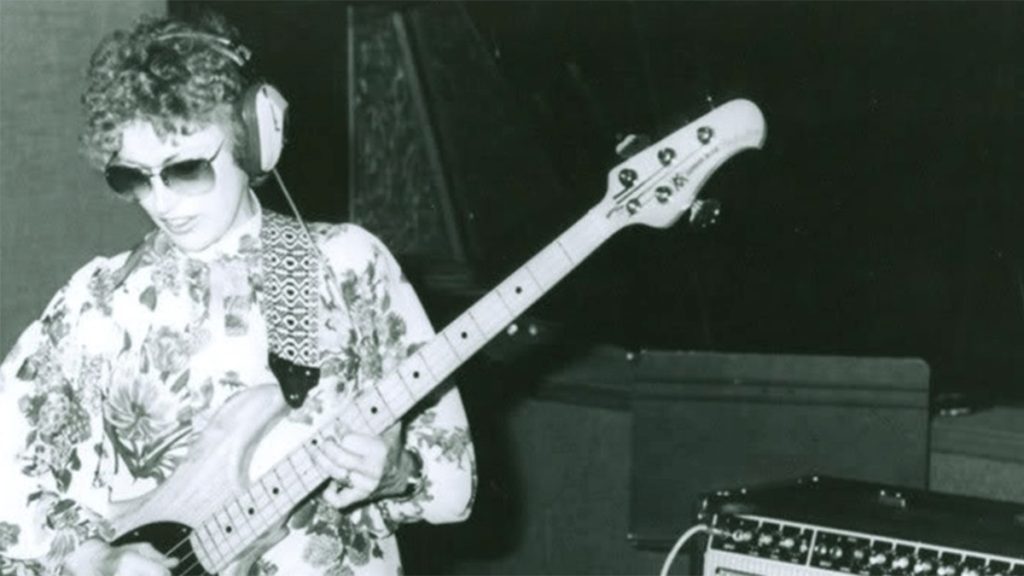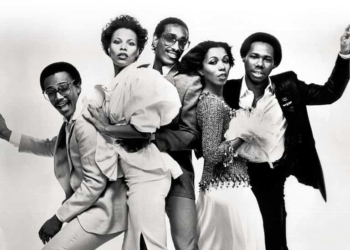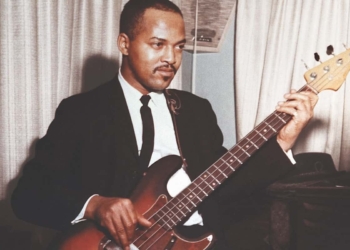Carol Kaye had already gained a reputation as one of the most productive session players by the end of the 1970s. She had played bass guitar on numerous albums, television scores, and movie soundtracks, showcasing her diverse talent ranging from Sam Cooke and Ray Charles to The Beach Boys and Barbra Streisand. She was known for playing Fender-style instruments but was also one of the first players to test out the new Music Man Bass.

Although her work initially went unnoticed as credited artists received recognition, Kaye and her Fender Precision Bass significantly impacted popular and jazz music. Her bond with the P-Bass is comparable to Slash and the Les Paul, evident in the pictures of her during her peak, showcasing the legendary bassist wielding her Fender Precision.
Despite their successful partnership, Carol Kaye did not particularly like the P-Bass and only used it because it produced a unique sound that no other instrument could match. She considered it an introductory instrument with strings and believed that other companies would eventually create better basses, although there were limited options then.
The Music Man StingRay bass, developed in 1976 by Leo Fender, Tommy Walker, and Sterling Ball, was one such bass that proved to be an improvement. It was the first production four-string bass to feature onboard active EQ. Once the trio perfected their model, they needed to sell it to consumers and retailers. They enlisted the help of Carol Kaye, one of the most prominent bass players in the industry, to launch the bass in 1978.
Kaye put the StingRay through its paces in a fusion track called “Changes,” recruiting drummer John Guerin for the project. According to Ernie Ball Music Man, Kaye was among an undisclosed elite group with early access to the instrument and was among the first to demo the StingRay.
In the funky two-minute track “Changes,” Carol Kaye showcases her skills on both the electric guitar and the Music Man StingRay bass. She lays down a thick low-end groove with double-stop punches and chromatic ascending-then-descending licks on the StingRay’s fretboard. At the 1:07 mark, she demonstrates her jazz skills with a wild arpeggio-loaded, chord-embellished guitar solo that complements the bass line.
“Changes” was sent to over 10,000 music stores in the US to promote the StingRay bass, and some stores still have the original tape. Kaye praised the StingRay’s clean sound and ability for reproducing the desired sound faithfully. She stated that she always knew someone would create a better bass than the Fender P-Bass, which she found difficult to play and had to modify to make it playable. She had to play extremely hard with high strings to achieve the desired sound and mute everything.
Overall, Kaye was impressed with the StingRay and considered it a great bass, which faithfully reproduced the desired sound.
Despite her role in promoting the StingRay, Kaye did not use it as her go-to bass. She preferred the Ibanez SRX700 later in her career, which offered her desired jazz sounds. In her interview with Ernie Ball Music Man, Kaye also advised people to incorporate music into their lives, emphasizing the power of music to touch people’s souls. Playing music allows individuals to express their inner selves and connect with others deeper. According to Kaye, music is an essential aspect of life that should be nurtured and cherished.





